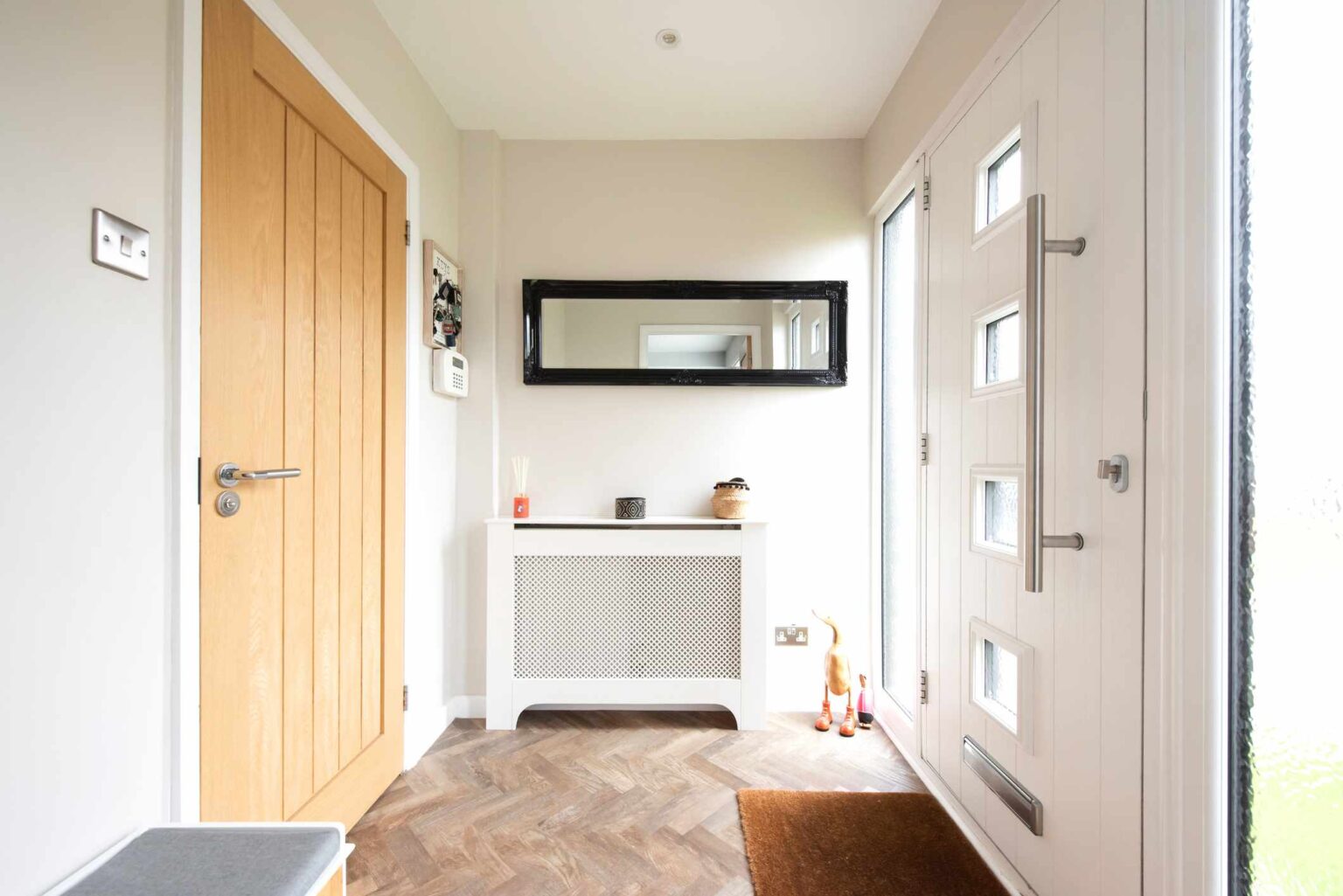Act as a native French speaker and an expert in Home Decoration, who speaks and writes fluently in French. Translate the article below into French. Make sure the translation is linguistically accurate, and conveying the meaning, facts and figures of the original text. Ensure the content is engaging and culturally appropriate for French readers. Don’t talk about Yourself or Your Experience. Don’t Self-reference. Don’t explain what you are doing. The article to translate:
Picture it: You’ve planned the perfect gallery wall only to realize you neglected to account for the unsightly fuse box in the middle of it all.
Before you scrap your idea, consider this: Working around necessary interior blemishes like thermostats, radiators, and even power cords can be a challenge, but it can be done.
We spoke to a few design experts to see how they work around these common eyesores. Get inspired by these tips on hiding things in plain sight.
Warning
Some eyesores shouldn’t be covered up completely for ventilation or safety purposes, like a radiator or fuse box. Be smart and don’t completely block access to them.
Radiators
There are plenty of radiator covers on the market that do their job well enough. But if you’re looking for something a bit different than the conventional approach, Tony Hoang, interior design expert and owner of What A Room, suggests shielding them with perforated metal panels painted in a different color or pattern.
“The radiator’s appearance is hidden, but the interior design becomes quite fashionable with an industrial tone,” he explains.
You might also consider adding a bench over lower radiators. Hoang says that this can be a great space for additional seating or storage—as long as there is enough heat diffusion in the area.
If it’s too much of a bother to hide radiators, don’t.
“You can also choose to embrace [radiators] and paint them to keep them looking clean and sleek,” says Morgan Blinn, Lead Designer at Rumor Designs.
Want more design inspiration? Sign up for our free daily newsletter for the latest decor ideas, designer tips, and more!
Fuse Boxes
Blinn suggests another simple camouflage solution, this time for fuse boxes: Paint them the same color as the wall or cover them in the same wallpaper—making sure that the fuse box is wallpapered separately from the rest of the wall so it blends in but you can still access it.
“An alternative to that would be creating a custom wood access panel to cover the fuse box, or displaying art over it,” she suggests, noting that both allow easy access or removal as needed.
Thermostats
How many times do you adjust your thermostat each day? Depending on your answer, you might want to proceed with caution when disguising it.
Hoang suggests hanging a mirror or other type of wall decor like a mirror by installing magnetic catches and hinges to stabilize the cover while creating a “secret door” you can easily open.
Note that “easily” is the operative word here. If the idea of moving something every time you adjust the temperature sounds labor-intensive, Blinn suggests a different approach: Buy a newer, sleeker thermostat.
Smart thermostats make it easy to adjust the temperature from your phone without even going near the device on the wall. If that’s the case, then feel free to hang that accessible artwork over it because you simply won’t have to access it often.
Power Cords
Blinn will often safely run cords under furniture or even area rugs to hide them.
“If we’re redoing floors in a project, we usually suggest adding a floor outlet or two to help with this situation,” she says.
Here’s where advanced technology can help; Blinn says that cords are easier to avoid if you choose things like Bluetooth bulbs, magnetic lights, and rechargeable USB lamps instead.
If you can’t cut the cord with your power supply, Hoang likes using flexible fabric cord covers in colors and patterns that complement the surrounding walls and/or furniture upholstery.
A Budget-Friendly Way to Cover Eyesores, Plus a Splurge-Worth Way
You don’t need to spend money to cover up these necessary but unsightly items in your home, although having a larger design budget can make it easier.
Here, we offer two approaches: one that costs no money at all and one that can set you back a bit. If you’re an experienced DIYer, perhaps you can find a happy medium.
Arrange Furniture Accordingly
Sometimes the simplest design solution is best. Brad Smith, the CEO and lead designer at Omni Home Ideas, suggests arranging existing furniture accordingly to draw attention away from the offending item.
“Positioning furniture like bookshelves or console tables can effectively obscure cords and routers without any need for permanent alterations,” he says.
Mask Larger Appliances With Custom Cabinetry
If you’re an advanced DIYer or have some extra funds in your household budget, you might want to consider custom cabinetry to mask eyesores.
While it’s certainly not the cheapest option on our list, it has a greater chance of adding to the overall aesthetic of your space.
In a recent project, interior designer and architect Barry Goralnick designed a paneled wall that hid a host of eyesores, from the lighting controls and plumbing valves to the air conditioner and even the washer and dryer.
“Everything is accessible, and no visitor would have a clue,” he says of his design.




